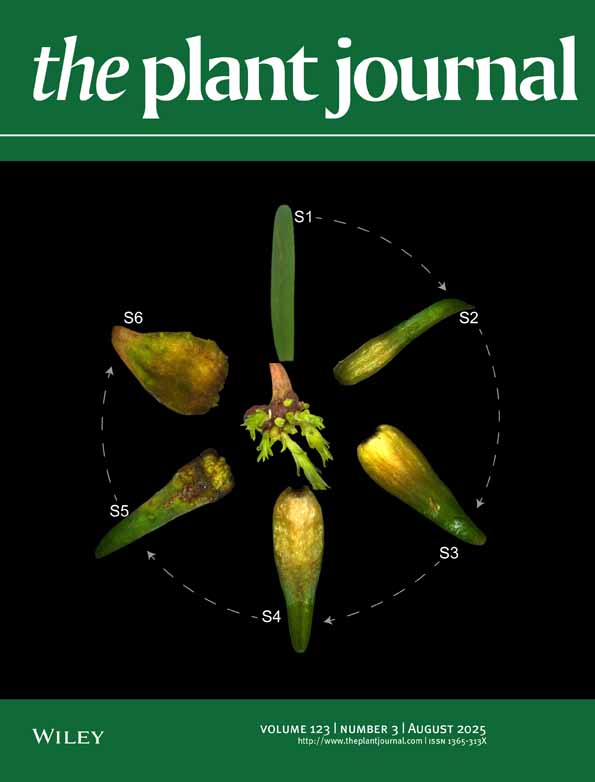Identification, subcellular localization, and developmental studies of oleosins in the anther of Brassica napus
Summary
mRNAs encoding putative oleosins have been detected in the tapetum of developing anthers in Brassica and Arabidopsis, but the authentic proteins have not been previously documented. Antibodies against a synthetic 15-residue polypeptide that represents a portion of the putative tapetum oleosins encoded by two cloned Brassica napus genes were raised. Using these antibodies for immunoblotting after SDS-PAGE of the sporophytic extracts of B. napus developing anthers, two oleosins of ∼ 48 and 45 kDa were detected. These two oleosins were judged to be the putative oleosins encoded by cloned Brassica genes because of their identical N-terminal sequences. The two oleosins were present in the anthers only during the developmental stage when the tapetum cells were packed with organelles. A fraction of low-density organelles was isolated from the developing anthers by flotation centrifugation. The fraction contained plastoglobule-filled plastids and lipid-containing particles. The structures of these two isolated organelles were similar to those in situ in the tapetum cells. Of subcellular fractions of the anther homogenate, the two oleosins were present exclusively in the low-density organelle fraction. They were absent in the surface fractions of the developing microspores and the mature pollen, although fragmented oleosin molecules were earlier reported to be present on the pollen. By immunocytochemistry, immunogold particles were found largely on the periphery of the plastoglobuli inside the plastids in the tapetum cells. The antibodies also detected oleosins on the surface of storage oil bodies inside the maturing microspores. Apparently, the gametophytic microspore oil-body oleosins share common epitopes at the generally non-conserved C-terminal domain with the sporophytic tapetum oleosins.




